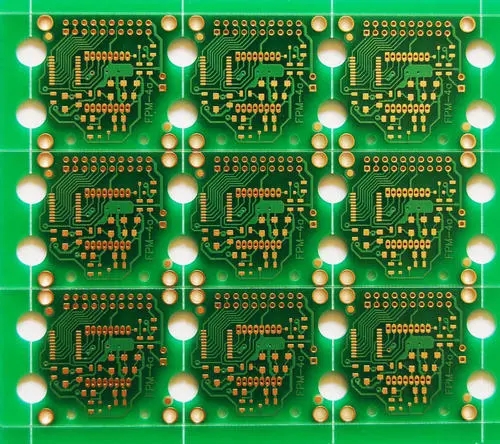From the perspective of the entire system, analyze the nature of each module signal, determine its position in the entire system, and determine the priority of the module in the layout.
The layout is of great significance to the entire system, which requires that the specific processing of each module be prioritized in the actual wiring process. The general layout rules require to distinguish whether the module is an analog circuit or a digital circuit, whether it is a high-frequency circuit or a low-frequency circuit, whether it is a main interference source or a sensitive key signal, and so on. Therefore, it is necessary to carefully analyze the properties of each module signal before layout, including module attributes, functions, power supply, specific signal frequency, current flow, current intensity, etc., to determine the layout of the module on the PCB board. Usually, when the mechanical structure is determined, a complex system will have N different layout methods, which requires a compromise of some rules to find the optimal layout from the perspective of the system.

In digital modules, there will be a clock, such as SDRAM's CLOCK, and the clock circuit is the main factor affecting EMC. Most of the noise of an integrated circuit is related to the clock frequency and its multiple harmonics. If the CLOCK signal is in the form of a sine wave, if it is not handled properly, it will “contribute” an interference source of this frequency or a multiple of this frequency to the system. If the CLOCK signal is in the form of a square wave, it will “contribute” a noise to the system. Disperse frequency interference source. At the same time, CLOCK is still a signal that is susceptible to interference. If CLOCK is interfered, the impact on the digital system can be imagined. Therefore, the clock circuit module is a key module, and various rules are given priority in the layout and routing process.
Similarly, there are various interrupt modules in many embedded hardware systems. Interrupt triggers include level trigger and edge trigger. Once encountered an interrupt that was set as a rising edge trigger was continuously triggered due to external interference, which eventually led to the phenomenon that the RTOS was blocked because it could not be processed.
According to this principle, analyze two simple circuit layouts. In a mobile phone hardware platform I came into contact with, the brightness circuit of the display screen is realized by using a PWM signal with different pulse widths, and an RC integrator circuit to establish different backlight voltages. Compared with CLOCK, the PWM signal has the same effect on the EMI of the entire system in a certain sense. But if you analyze some carefully, you should know that if the PWM signal of the IC establishes an analog level in the shortest possible path before being transmitted on the PCB board, that is to say, the resistance and capacitance are as close as possible to the PWM. Pin placement, so that the interference of PWM to the system can be reduced to a minimum. In the design of the mobile phone hardware platform, the RF part and the audio part are the core of the system, and the wiring of these two parts occupies the absolute core position and puts it in a priority position when wiring. Therefore, in the actual layout and routing, the signal lines of these two modules are separately laid out in an intermediate layer, and the power layer and ground layer are used in the adjacent layer to shield it, and other modules are as far away as possible from these two modules to avoid introducing interference . In addition, try to consider such a detail: The audio signal with a small input from the MIC needs to be amplified to a certain degree before being input to the AUDIO ADC. We know that the channel transmission signal-to-noise ratio in the abstract sense is a measure of the impact of noise on the system. It can be cross-referenced, a small noise crosstalks the channel before the audio signal is amplified and the audio signal enters the channel after the audio signal is amplified. If the path of this channel cannot pass through areas with strong interference sources, it is recommended that the audio signal be amplified before transmission.
Another example is that types of devices are usually connected to the bus of a complex system. For example, the I2C bus can be connected to 127 slave devices. In some set-top box hardware platforms, DEMODULATOR, TUNER, and E2PROM are usually connected. This also requires that different devices be distinguished in the frequency of sharing the bus, and the devices with a high frequency of use should be placed in a relatively important position. For example, the EMI interface on the above-mentioned QAMI5516 platform uses both SDRAM and FLASH devices. Based on the understanding of the system, SDRAM puts the running code of the real-time operating system, and FLASH is used as a storage medium. During the operation of the software system, SDRAM has more read and write operations than FLASH, so the wiring process should be done first. Consider the location of SDRAM.
The above is an introduction on how to determine the priority of the module in the layout. Ipcb is also provided to PCB manufacturers and PCB manufacturing technology.